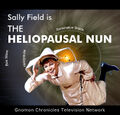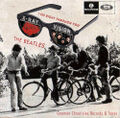March 30: Difference between revisions
No edit summary |
No edit summary |
||
| (One intermediate revision by the same user not shown) | |||
| Line 1: | Line 1: | ||
{{Daily Image/March 30}}{{Preface/March 30}} | |||
== Better Than News == | |||
{{Better Than News/March 30}} | |||
== Beyond Plausible == | |||
{{Beyond Plausible/March 30}} | |||
== In Other Words == | |||
{{ | {{In Other Words/March 30}} | ||
== Are You Sure == | |||
{{Are You Sure/March 30}} | |||
== Topic of the Day == | |||
{{Daily Favorites/March 30}} | |||
Latest revision as of 10:33, 20 February 2023
Better Than News
Kon-Tiki: Across Walden Pond is a book by Henry David Thoreau and Thor Heyerdahl, reflecting upon the authors' simple traversal of natural surroundings.
The Poseidon Connection is a neo-noir crime action disaster film directed by William Friedkin and Irwin Allen.
Zen and the Art of Typewriter Maintenance is a self-discovery travel and body horror film written and directed by David Cronenberg, based on the nonfiction book of the same name by Robert Pirsig.
The Joy of Enigma is a 1972 illustrated manual of erotic enigma machine encryption and decryption activities.
Hell Bent for Lanthanum is a 1960 American Western film about an innocent chemist (Carl Gustaf Mosander) who is forced to go on the run to try and clear his name by isolating a new element (Lanthanum) from cerium nitrate.
Eyes of Laura Mars Game is a role-playing board game based on the 1978 film Eyes of Laura Mars starring Faye Dunaway.
The Heliopausal Nun is an American sitcom about Sister Bertrille, an astrophysicist nun who can travel through outer space when the solar wind catches her cornette.
Big Thing in Little China is a comedy horror thriller film starring Kurt Russell.
Beyond Plausible
Matrix: Cheese Wars is a science fiction foodie film starring Keanu Reeves, Carrie-Anne Moss, and Gordon Ramsay.
In Other Words
"Day Tweeter" is a song by the English rock band the Tweetles.
"I See Right Through You" is a lost song by the British rock band the Beatles about X-ray specs.
Are You Sure
• ... that mathematician Stefan Banach is the namesake of Banach spaces, Banach algebras, the Banach–Tarski paradox, the Hahn–Banach theorem, the Banach–Steinhaus theorem, the Banach-Mazur game, the Banach–Alaoglu theorem, and the Banach fixed-point theorem?
• ... that physicist Charles Vernon Boys achieved recognition as a scientist for his invention of the fused quartz fiber torsion balance, which allowed him to measure extremely small forces, and that Boys made the fused quartz fibers for his instrument by attaching a quartz rod to a crossbow quarrel, heating the rod to the point of melting, and firing the crossbow, and that by this means he produced fiber so thin that it could not be resolved with an optical microscope?
• ... that mathematician Harold Scott "Donald" Coxeter composed music in his youth and was an accomplished pianist at the age of 10, and that Coxeter felt that mathematics and music were intimately related, outlining his ideas in a 1962 article on "Mathematics and Music" in the Canadian Music Journal?
• ... that mathematician Adam Ries wrote several books on practical mathematics, including Rechnung auff der linihen ("Reckoning on the Line", 1518), which describes calculation on a calculating board, a kind of abacus, and that according to the foreword the second edition was expressly intended for children?
Topic of the Day
Art Films
Sweeney Vince is a 2007 American revisionist biography musical thriller film loosely based on the life of Vincent van Gogh.
Beach Party A-Go-Gaugin is a beach party art film starring Annette Funicello, Frankie Avalon, and Paul Gaugin.













